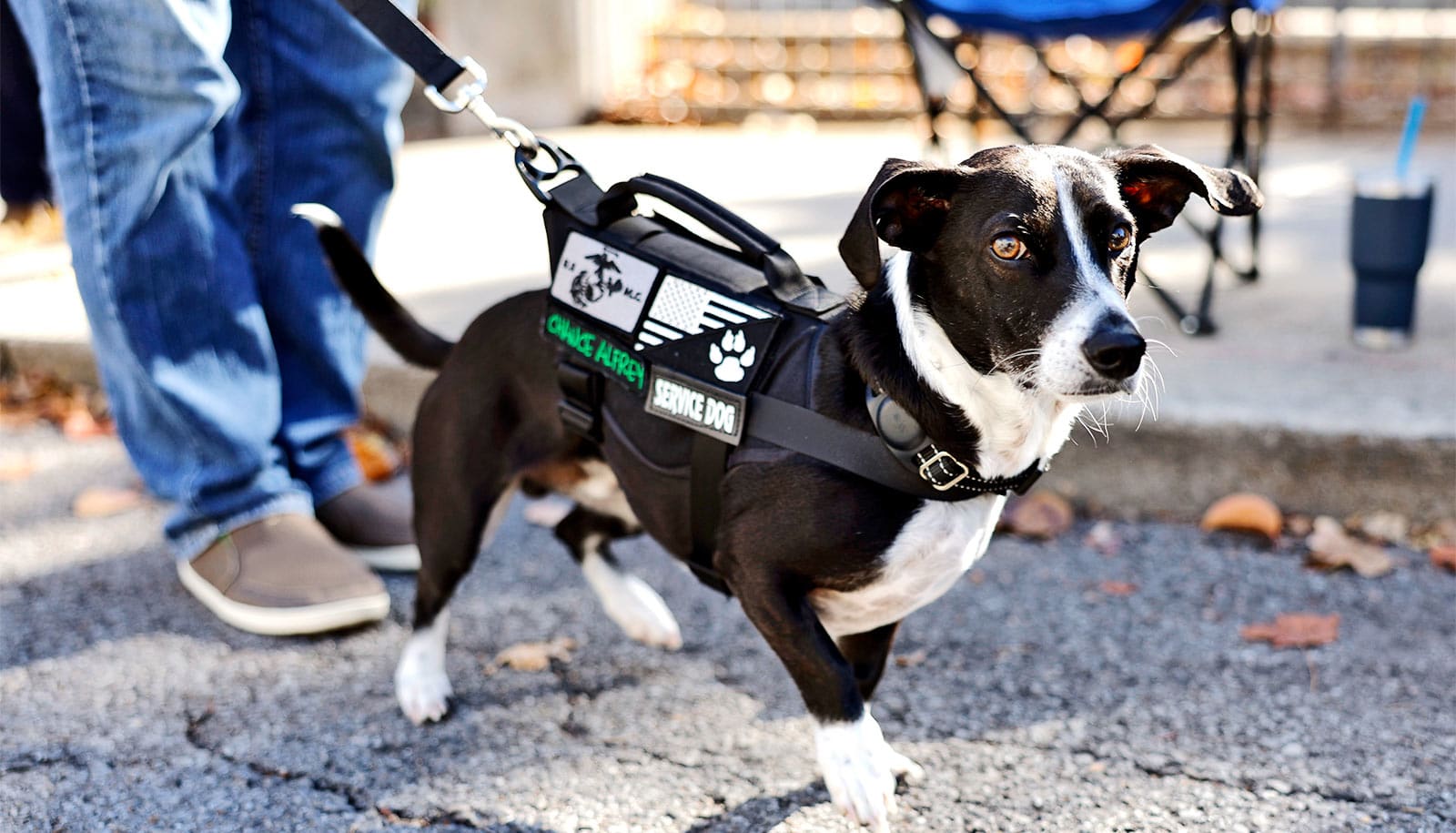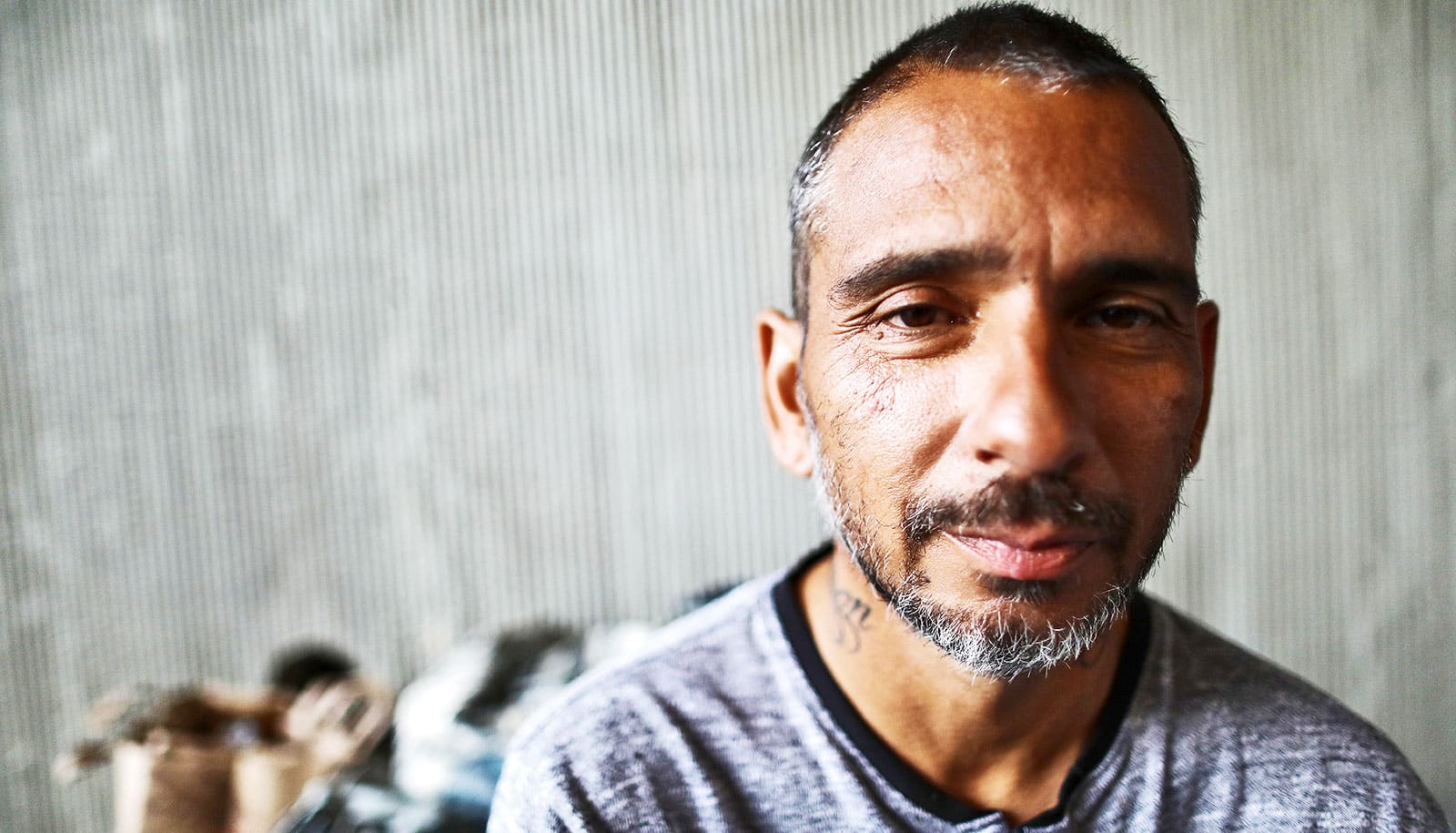Brain injuries, access to firearms, and a culture of selflessness intersect to put the lives of our nation’s heroes at risk, says Jayna Moceri-Brooks.
A troubling report from the Pentagon earlier this year revealed that suicide is the leading cause of death for Army soldiers—a population that is nearly nine times as likely to die by suicide than in combat.
“Suicide in the military continues to be a public health crisis, despite decades of targeted interventions. The rates are persistently higher than in the general population,” says Moceri-Brooks, an assistant professor at New York University’s Rory Meyers College of Nursing who studies firearm injury prevention and suicide among service members and veterans.
Moceri-Brooks is working to address a key root cause of suicide in the military, and one that is often overlooked: traumatic brain injuries, or TBIs. Her research also shows that the culture of the armed forces—which promotes loyalty, selflessness, and courage—can both help and harm the mental health of service members.
“Those values end up being a double-edged sword. We have to figure out how to honor them, but also have space to make sure that those same values don’t become barriers to seeking and receiving care,” says Moceri-Brooks, who joined NYU Meyers this fall following a postdoctoral fellowship at Rutgers New Jersey Gun Violence Research Center.
In honor of Veterans Day, Moceri-Brooks explains some promising strategies—including proposed changes to the Purple Heart program and legislation informed by her research—to help protect those protecting our country:
What puts service members at increased risk for suicide?
One of the most prominent risk factors is having a traumatic brain injury—specifically, a TBI related to deployment. Those with combat-related TBIs are four times more likely to attempt suicide than service members or veterans without them, and the suicide rate among veterans with a TBI is 56 percent higher than veterans without a TBI. We’re also finding that there’s a high incidence of suicide among service members who have blast overpressure injuries—caused by exposure to explosions—from military training, and that emerging data is of great concern.
In addition, the number one means for suicide within the military population is with firearms. The majority are firearm owners, and our research shows that most firearm owners do not store their firearms securely. A large proportion store their firearms in the most dangerous way: unlocked and loaded within their homes.
This is troubling because impulsivity can be one of the symptoms of brain injuries. If you have impulsive tendencies from a brain injury, and you have a loaded and unlocked firearm nearby, there may not be enough time to stop or interrupt that thought.
Why do TBIs often go undiagnosed or untreated?
We focused on TBIs a lot towards the end of the post-9/11 conflicts, and then steadily lost focus on treating these injuries. They’re uniquely invisible, and they’re easy to overlook.
Many people with TBIs misunderstand their symptoms, so we’re trying to help educate combat veterans that they have a physiologic injury. Especially in the first decade of the post-9/11 conflicts, a lot of service members were being misdiagnosed with PTSD. They were loaded with medications—sometimes antipsychotic medications that severely impacted their quality of life—while their TBI was not treated.
Finally, we believe there are tens of thousands of service members and veterans who don’t know that they have a blast overpressure injury from combat, training, or both. During training, soldiers—especially those in the tanker community—could have been getting blast overpressure injuries, and then were deployed to Iraq or Afghanistan where they sustained more. These injuries may have been compounding over their entire military careers.
There’s a whole range of things you can do to help mitigate TBI symptoms, which can include headaches, visual changes, behavioral changes, and memory deficits. What we’re hoping to do is improve TBI care to offer comprehensive treatment targeted to individual needs.
There are societal ideas—loyalty, sacrifice, strength—of what the military embodies. How do cultural factors play into this?
Cultural context is really important. Every branch of the military has a value system; one of the seven Army values, for instance, is selfless service. The need to be selfless makes many service members hold back on asking for the care they need because they don’t want to be a burden on others or be perceived as weak. For example, while deployed, they didn’t want to put their unit in harm’s way by initiating an additional convoy to get to a treatment area, or by leaving their unit short to receive treatment.
My research finds that culture and experiences within the military strongly play into whether service members disclose their TBI and mental health symptoms. When they’ve seen other service members punished for pursuing care, they do not disclose their own struggles or symptoms. This creates a vicious cycle and the stigma persists.
As a result, service members feel betrayed by the military—they feel like the loyalty demanded of them was not reciprocated. My study found that perceived military institutional betrayal is associated with increased suicide risk.
What does your research show about the Purple Heart, the medal given to service members who are wounded or killed while serving?
Many veterans who experienced a TBI during the post-9/11 conflicts were denied a Purple Heart because their injury was not documented in theater. For the first 11 years of the war, there was no protocol on how to identify or treat these injuries, so there was no mechanism in place to document TBIs while they were serving in combat zones.
My study shows that those who did not receive a Purple Heart for their combat-related TBI had a higher suicide risk. This is because the Purple Heart acknowledges and validates the invisible injury—it helps them to join the band of brothers and sisters around the country who have been wounded in combat.
The acknowledgement also serves as a conduit for care. If we identify by name the symptoms that veterans have been struggling with for years, this can prompt them to get care.
Providing Purple Hearts to service members who have experienced combat-related traumatic brain injuries is one tangible, evidence-based way we can address the suicide crisis within the military community. If it could prevent even one death, then we must do it.
You’ve helped write bipartisan legislation—the Blast Overpressure Safety Act—to better address TBI among service members. Can you tell us about it?
I helped draft language for a bill that is sponsored by Senator Warren, Senator Ernst, Representative Khanna, and Representative Stefanik in both the Senate and House versions of the FY25 National Defense Authorization Act. It’s currently under consideration. This bill will hopefully provide some accountability by asking for initiatives that would create a plan on how we can prevent brain injuries and care for those who have them. Ultimately its goal is to prevent suicide.
The bill mandates neurocognitive assessments over a service member’s career and creates blast overpressure and TBI logs for all service members. It also mandates a review of all service members whose careers have been harmed because of their TBI symptoms, or who have died by suicide with a TBI history.
In collaboration with Representative Sherrill’s office, I also helped to draft an amendment to the House edition of the FY 25 National Defense Authorization Act that was informed by my research findings related to the Purple Heart. As soon as we receive some of the data requested, we can intervene to provide recognition, screening, and treatment for TBI.
What drew you to this area of research?
I am an active duty Army spouse. As a member of the military community, I have seen firsthand the impact of suicide within this community and want to do everything that I can to help prevent more loss.
Also, I’m a nurse, and I believe nurses have a phenomenal opportunity to lead the way in addressing this public health crisis within the military community. Being the most trusted profession in healthcare, we are perfectly positioned to have difficult and sensitive conversations with firearm owners without judgment. Nurses have always been leaders in different aspects of public safety, and I think nurses should lead in addressing firearm safety as much as they led initiatives on the use of seat belts, helmets, and car seats.
What resources are available to service members or veterans who may be struggling with their mental health?
The 988 crisis line is an important resource—when veterans in crisis call, they can push one to be connected immediately to someone who will listen and provide resources specific to veterans. Military OneSource is also an excellent resource that service members, veterans, and their families can call or text, and it’s accessible to international service members stationed around the world. Veterans can also access mental health and TBI care through the VA. Finally, I encourage any veteran who was exposed to blasts in training or in combat to get evaluated for a TBI and seek out care for lingering symptoms.
Securing firearms is also really important. The VA gives free gun locks to anyone who is interested. For veterans in New York, the Rockefeller Regional Gun Violence Research Consortium has a map that provides places where firearm owners can securely store their firearm outside of the home, such as different firearm shops, and the Rutgers Gun Violence Research Center created a similar map of firearm storage locations in New Jersey.
Veterans and service members can also support one another by checking in and encouraging each other to secure their firearms. If a friend is in distress and state laws allow it, they can offer to temporarily store their firearms for them. If not, they can hold onto firing pins or a safe lock so the friend can’t use their firearm.
Helping service members and veterans access the life-saving help they need is one thing we can all agree on.
Source: NYU



